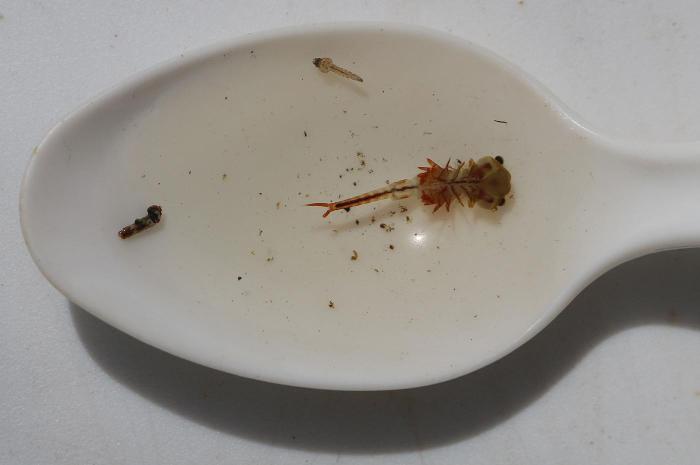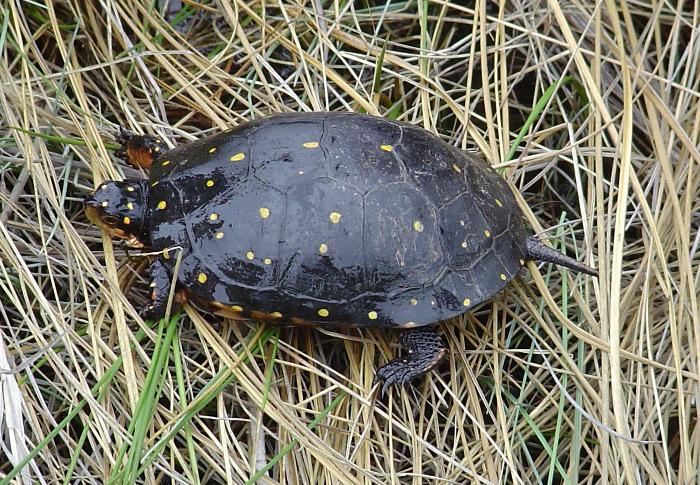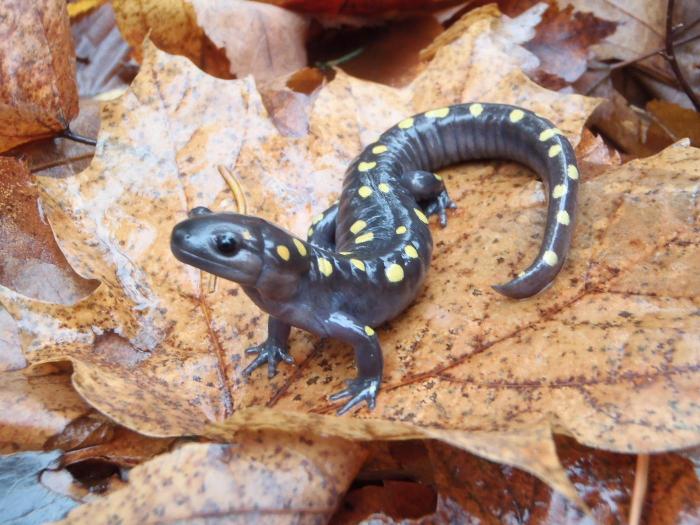Animals
Over 550 animal species have been documented in vernal pools in northeastern forests (Colburn 2004). Invertebrates comprise the majority of the animal species in vernal pools, with aquatic insects representing one of the largest groups. These include tiny crustaceans, fingernail clams, snails, flatworms, water mites, caddisflies, water beetles, damselflies, dragonflies, mayflies, springtails, mosquitoes, and other kinds of aquatic insects. A number of amphibian species also utilize vernal pools for part of their life cycle. Hundreds if not thousands of frogs and salamanders, such as wood frogs, spring peepers, gray treefrogs, chorus frogs, spotted salamanders, blue-spotted salamanders, and eastern tiger salamanders, migrate to and breed in some vernal pools in the spring.
Many of the animal species that live in vernal pools have developed special strategies or adaptations for dealing with the highly variable and seasonal nature of these wetlands, and for living in both aquatic and terrestrial habitats. For example, many of the crustaceans and aquatic insects lay eggs that can tolerate drying and/or freezing. Some of these species also lay large numbers of eggs, and only a portion of these eggs hatch in a given year. Many of the invertebrates and amphibians that inhabit vernal pools breed and/or hatch in the pools early in the spring, and grow rapidly so that they can complete their development and/or leave the pools before they dry.
Several amphibian and invertebrate species actually require or depend on vernal pools for part or all of their life cycle. These species are called vernal pool obligate or indicator species. In Michigan, vernal pool indicator species include the wood frog, spotted salamander, blue-spotted salamander, and a freshwater crustacean called fairy shrimp.

Fairy Shrimp. Photo: Brandon Schroeder
In additional to the vernal pool obligate species, many animals breed in or use vernal pools for food, water, and/or shelter during some part of their life cycle, but do not require vernal pools for their survival. These species are called vernal pool facultative species. These include a number of invertebrates, amphibians, reptiles, birds, and mammals. Green frogs, eastern garter snakes, wood ducks, great blue herons, and raccoons feed on frogs, salamanders, and invertebrates in vernal pools. Vernal pools provide food and water to bats, black bear, and deer, particularly in the spring. Several rare animal species in Michigan are associated with or utilize vernal pools, including the smallmouth salamander (state endangered), copperbelly water snake (federally threatened, state endangered), Blanding’s turtle (special concern), spotted turtle (state threatened), wood turtle (special concern), and red-shouldered hawk (state threatened).

Spotted Turtle. Photo: MNFI

